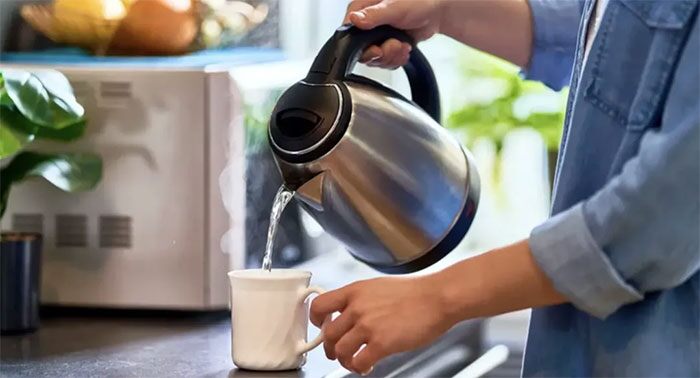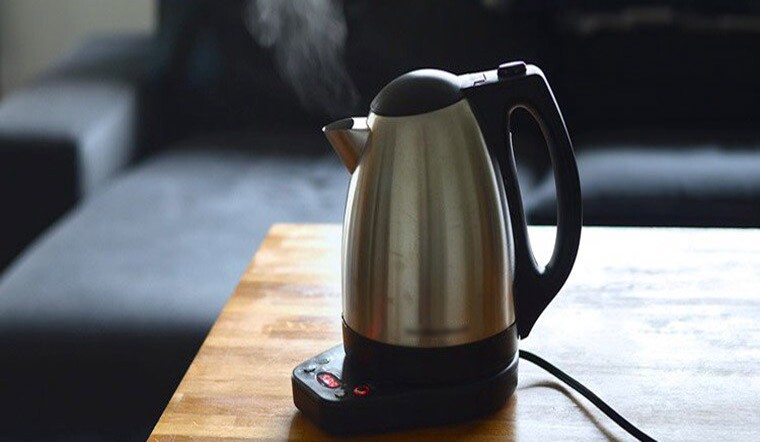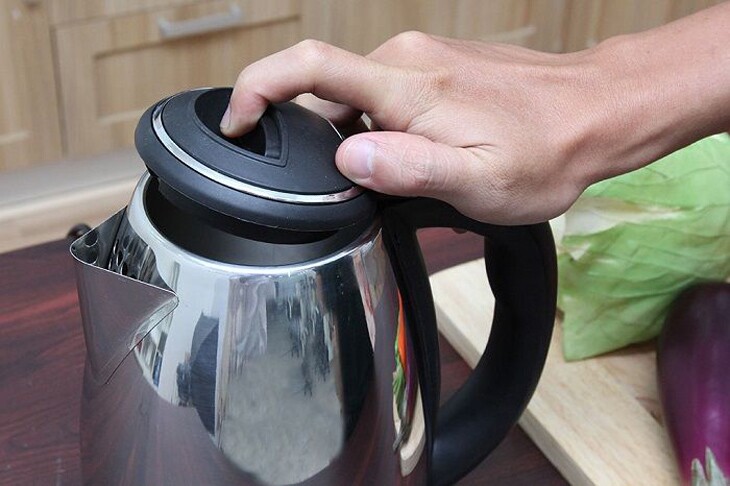While electric kettles are incredibly convenient, some Western countries, notably the United States, rarely use them.

1. Why do foreigners rarely use electric kettles despite their convenience?
– Voltage differences between countries
Most households in the United States use a voltage of 100 – 127V. However, England and other countries use a higher voltage, typically ranging from 220 – 240V.
As a result, electric kettles in the US may not boil water as quickly as those in other parts of the world. In this case, one cannot argue that electric kettles are more convenient.
– Differences in dietary habits
While most Vietnamese and Asian people enjoy drinking tea, foreigners are not accustomed to this habit. Instead, they prefer coffee. Therefore, they are more inclined to invest in a coffee maker rather than an electric kettle.

2. Important notes when using an electric kettle
– Avoid continuous boiling
Boiling water continuously for extended periods can overload the heating element of the electric kettle, leading to a potential fire hazard. It is advisable to allow the kettle to cool down between uses to ensure its longevity.
– Do not empty the kettle immediately after boiling
Even after the water reaches 100 degrees Celsius and the power is cut off, the water continues to boil due to the residual heat in the heating element. Completely emptying the kettle at this point can damage the heating element. Leaving a small amount of water, approximately 15ml, in the kettle after use can extend its lifespan.
– Keep the lid closed while boiling
Failing to keep the lid closed during boiling will result in increased boiling time and higher electricity consumption. Furthermore, leaving the lid open can prevent the automatic shut-off function from activating when the water reaches a rolling boil. Continuing to boil the kettle dry increases the risk of fire and damage to the appliance.

– Maintain the minimum and maximum water levels
Electric kettles have minimum (“Min”) and maximum (“Max”) water level indicators. Filling below the minimum level can be unsafe, as the kettle may not have a safety shut-off feature, leading to a potential fire hazard if the water boils dry. Even if the kettle has an automatic shut-off, operating it with insufficient water can reduce its lifespan.
Filling above the maximum level can cause water to spill out and come into contact with internal components, leading to electrical shorts and potential explosions.
– Unplug the kettle when not in use
Over time, the kettle’s switch may malfunction or become accidentally activated. To prevent unintended operation and potential hazards, it is best to unplug the kettle from the power source when not in use.
– Avoid storing water in the kettle
Storing water in the electric kettle can lead to the buildup of limescale, causing rust and damage to the appliance. Therefore, it is not recommended to store water in the kettle for extended periods.
– Regularly clean the electric kettle
With prolonged use, the inside of the electric kettle can develop scale buildup. If left unattended, this buildup can reduce the kettle’s heat exchange efficiency, resulting in slower boiling times. Additionally, thick scale deposits on the bottom of the kettle can cause the temperature relay to malfunction, leading to premature shut-off before the water reaches a boil. Regular cleaning of the electric kettle is essential to maintain its optimal performance.

































